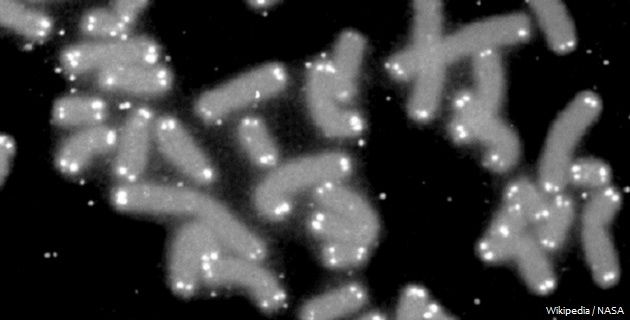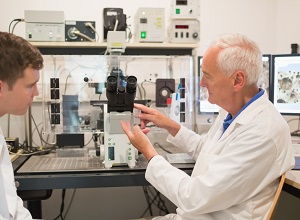Telomerase and telomere extension

In humans, the DNA within the nucleus of our cells exists in the form of 46 string-like molecular structures referred to as chromosomes. A telomere is a repetitive sequence of DNA found at the ends of chromosomes. In humans, telomeres are usually between 8000 to 10 000 nucleotides in length. Telomeres are thought to protect chromosomes from deterioration and from ligating / fusing with other chromosomes. During cell division (when our chromosomes are replicated to be evenly distributed into each of the 2 new daughter cells) the enzymes that replicate the chromosomes are unable to complete the replication all the way to the ends of the chromosomes. The telomeres therefore become shorter after each cell division. Telomere shortening is thought to contribute to limiting the number of cell divisions a cell can undergo. Telomere shortening is also associated with a range of diseases and proposed as one of the causes of the aging process.
The Telomerase enzyme is able to maintain telomere length, however, in humans this enzyme is only expressed at significant levels in a few cell types including germ cells (sperm & egg cells) and some stem cells. This absence of Telomerase makes it extremely difficult to grow and expand most human cell types in the lab for a significant duration.
Telomere extension enhances cell growth in culture
A recent study from Stanford University's School of Medicine has shown that telomere extension is able to increase the proliferative capacity in cultured human cells. Telomere extension was induced by temporarily introducing messenger RNA coding for TERT (the catalytic sub-unit of Telomerase). The messenger RNA was modified to prevent its degradation for for up to ~48 hours. Should cultured cells be used for cell replacement therapies, the inability of these cells to divide indefinitely (due to the 48 hour window) would minimise the risks of cancer from such treatments. The study authors claim that this method of extending telomeres acts much more quickly compared to other techniques. This research was published in the FASEB Journal with Helen Blau as the senior author. In the near term, this discovery may assist researchers to increase the culturing capacity for a large range of cell types for use in disease modelling or any other studies.

Above: Human chromosomes with telomeres labelled bright white
The Telomerase Revolution
Dr Michael Fossel is a leading figure in aging research with a vast array of experience. Michael's newest book, The Telomerase Revolution explains how the enzyme Telomerase is starting to be used as a therapeutic tool aimed at maintaining telomere length, extending life span, and potentially aiding the treatment of a range of age-associated diseases. Michael is also the co-founder of the biotech company Telocyte, focussing on the development of human clinical trials for Telomerase therapy to treat Alzheimer's disease.














